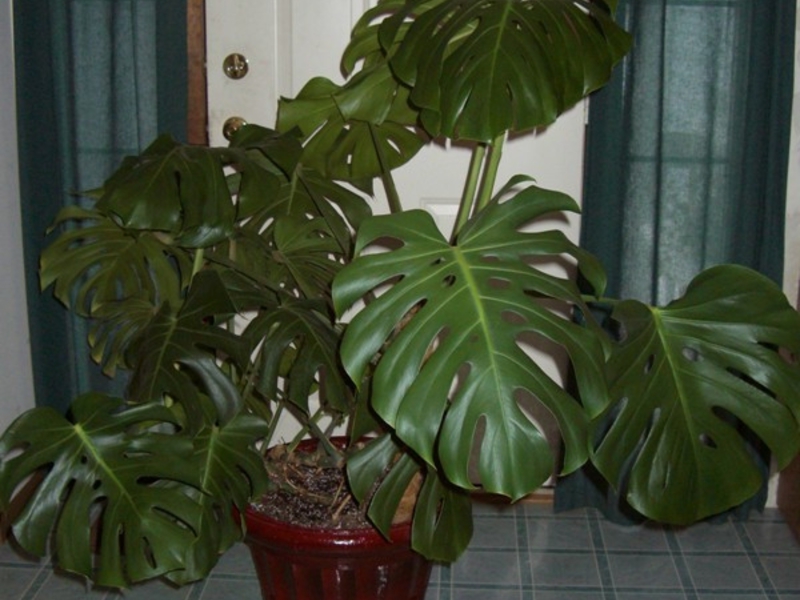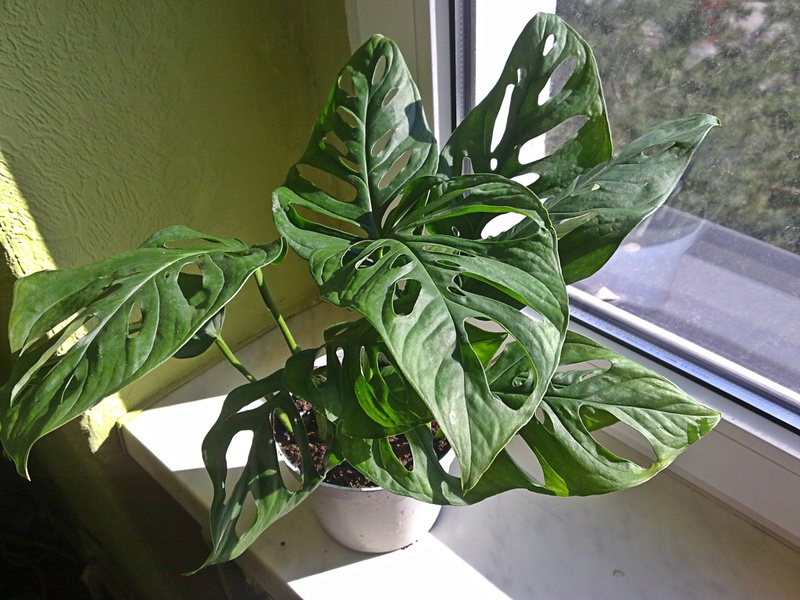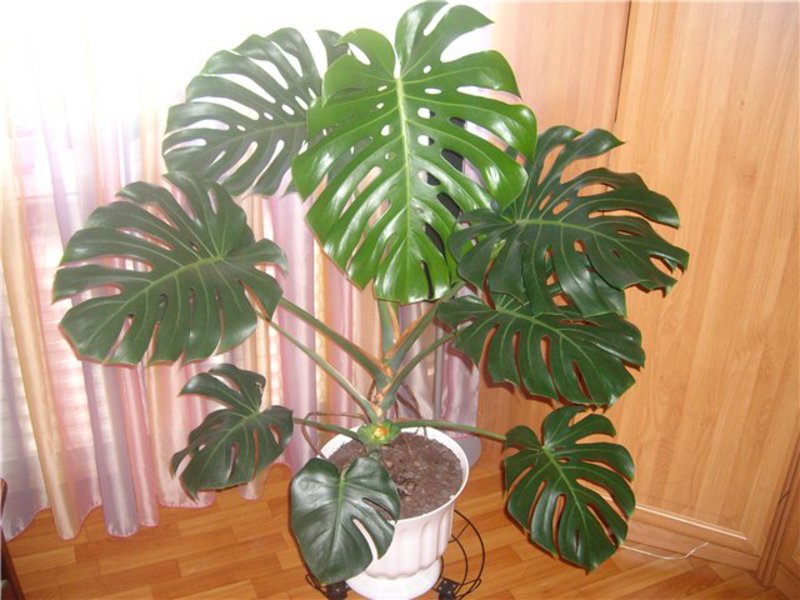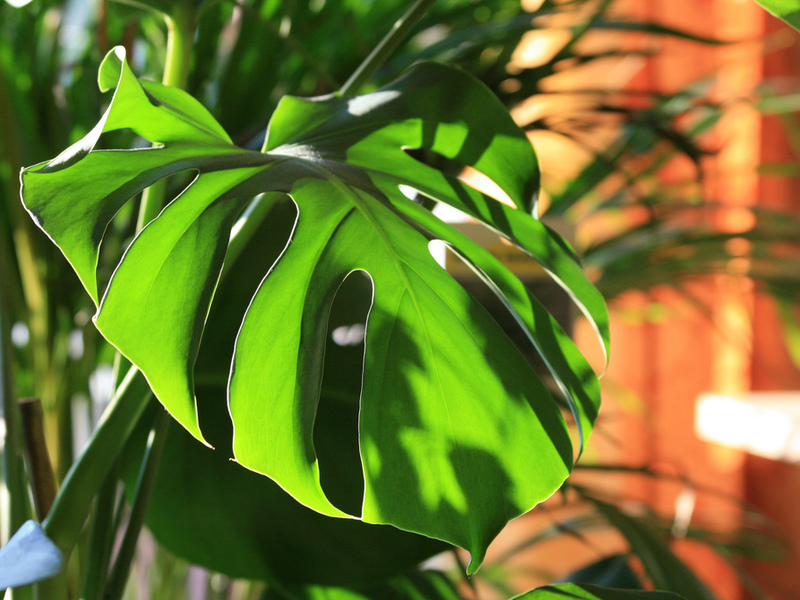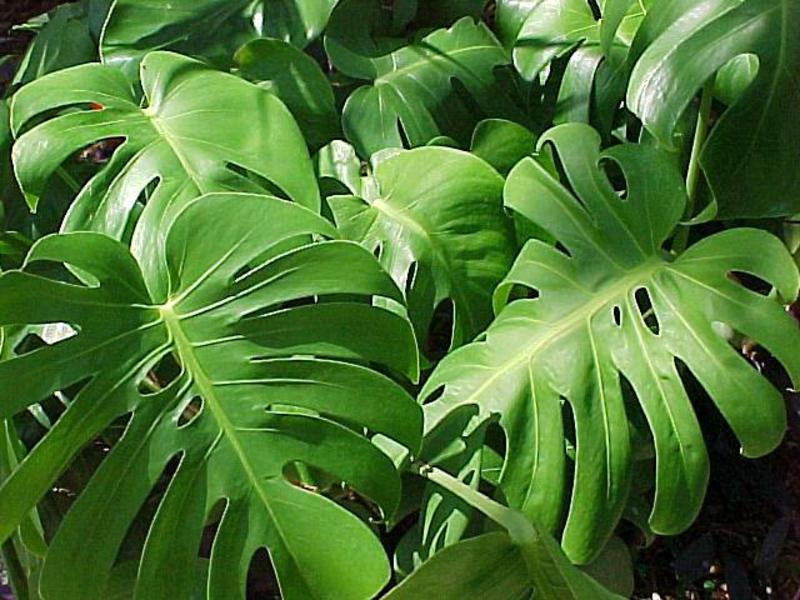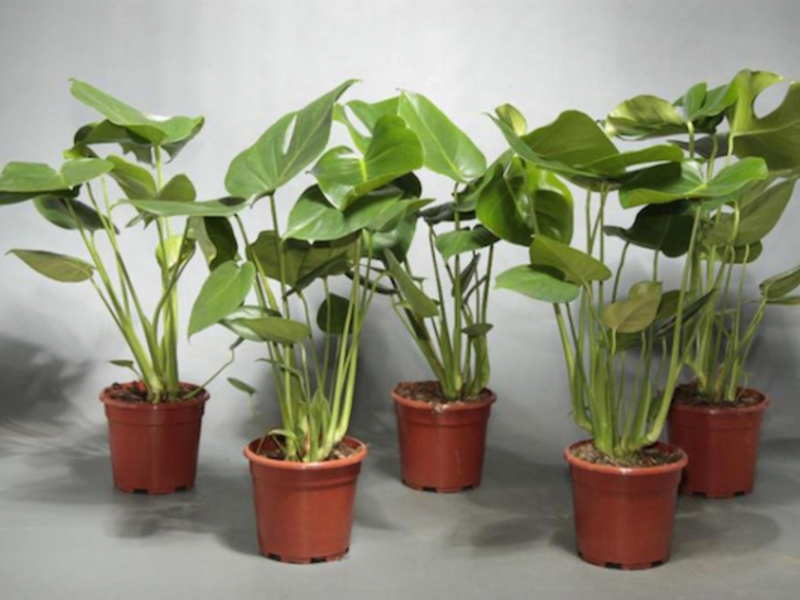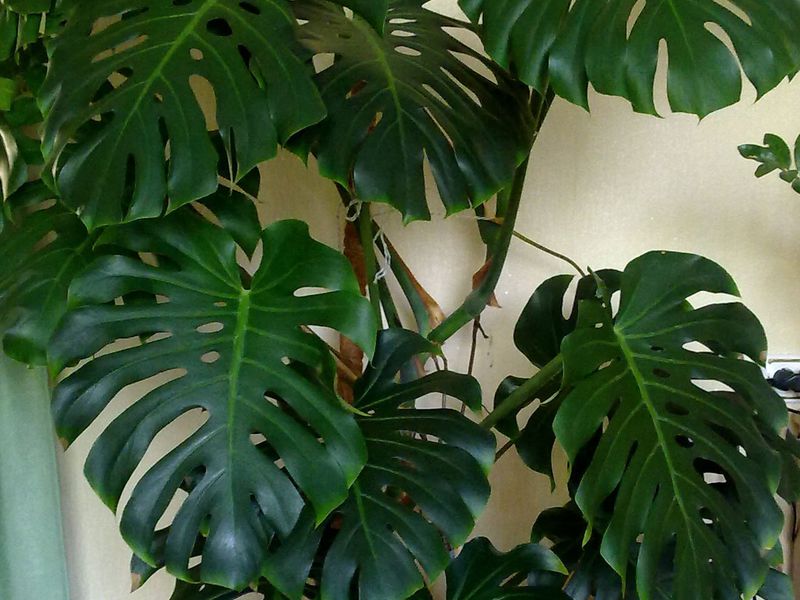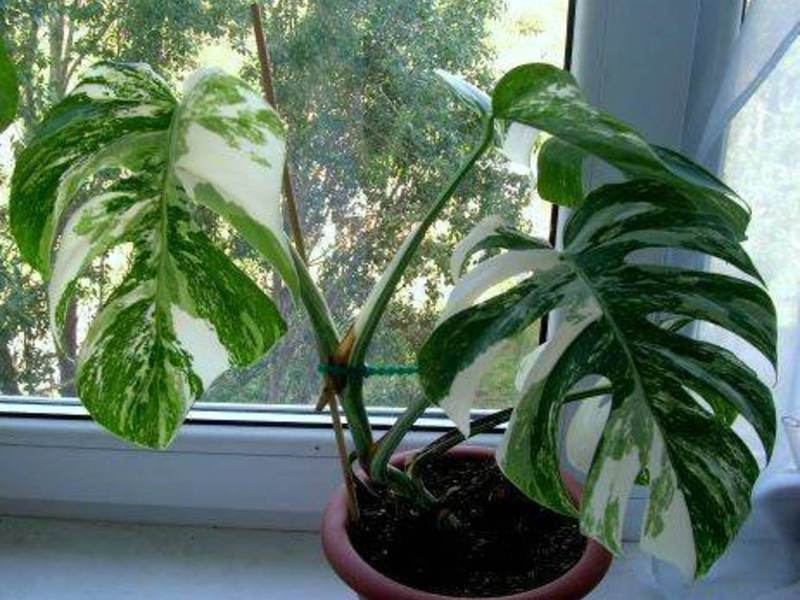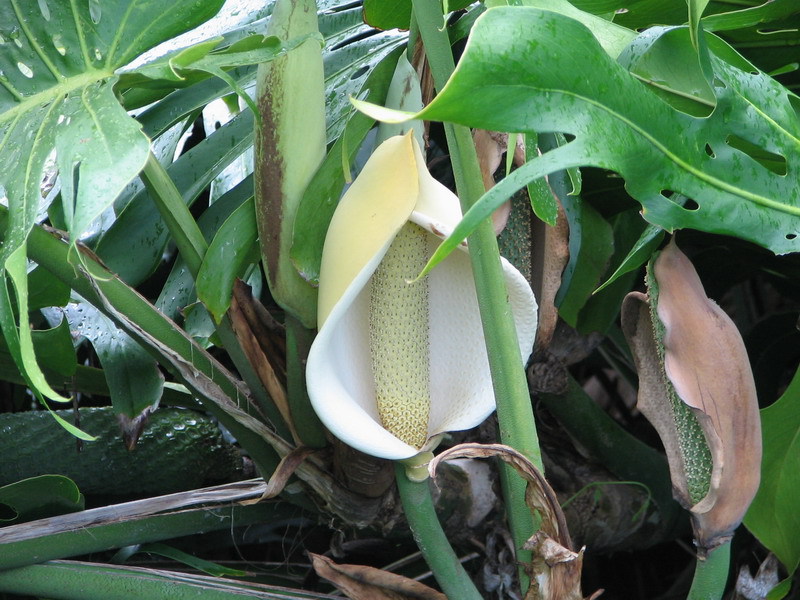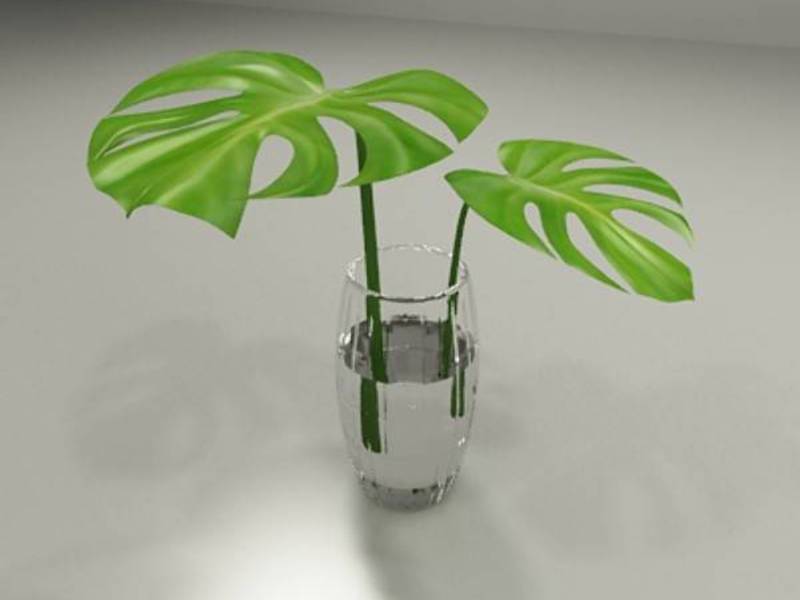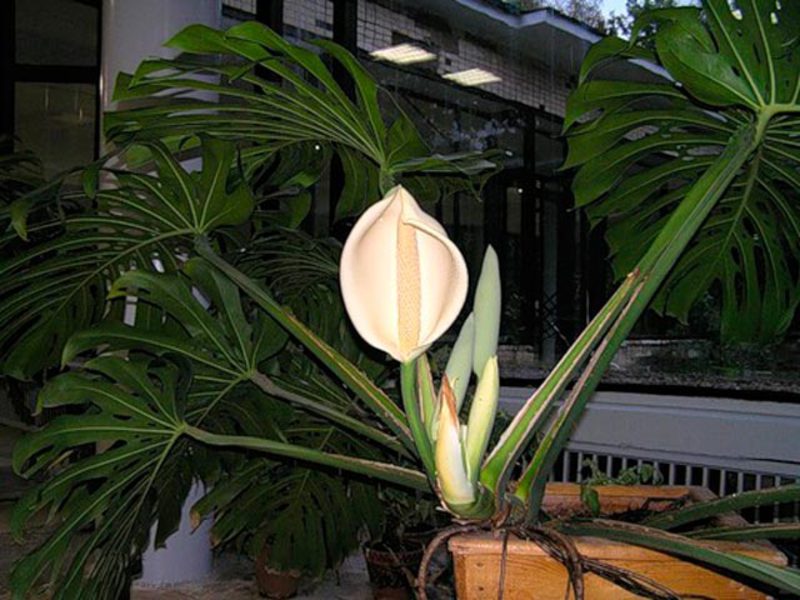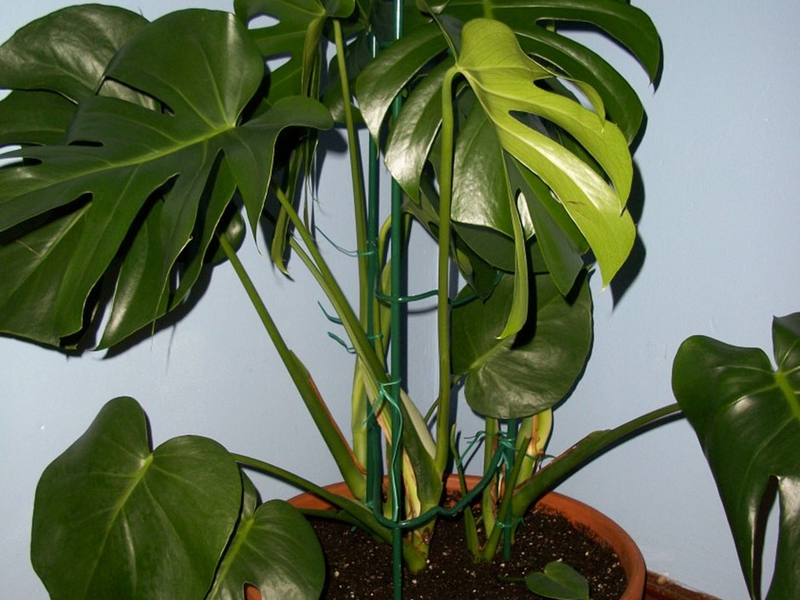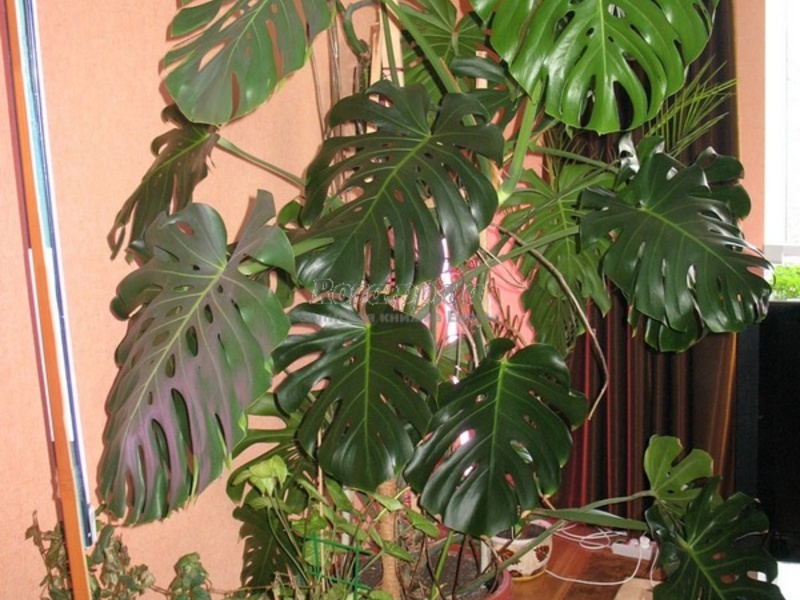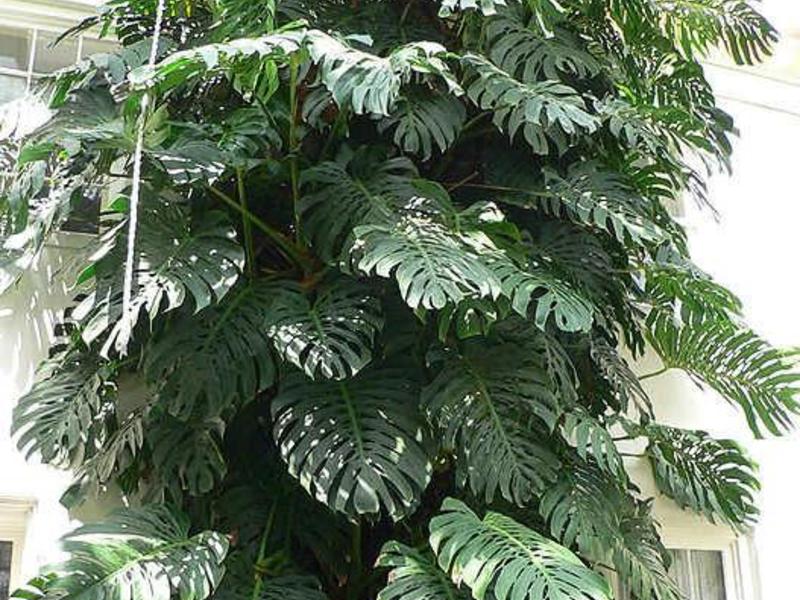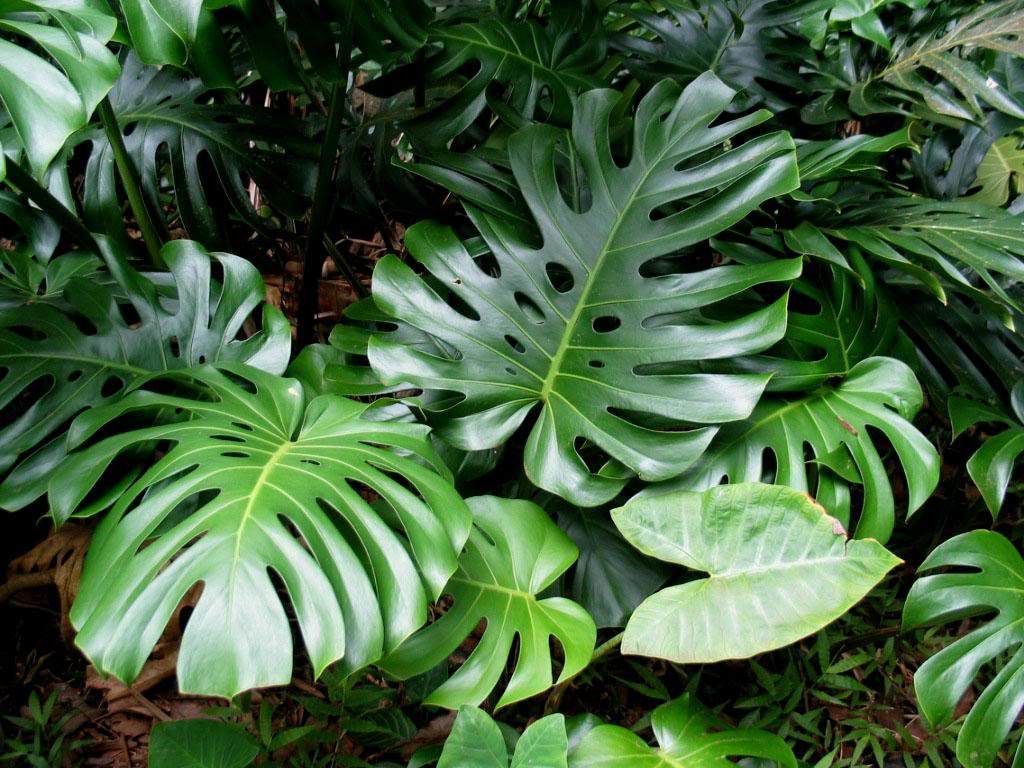 Monstera is a fairly large plant, a feature of which is dissected leaves and peculiar aerial roots. It comes from the tropical forests of the South American continent, but it can be found even in Asia. The flower takes root well in apartments and houses, and because of its unpretentiousness and beauty, it is very popular.
Monstera is a fairly large plant, a feature of which is dissected leaves and peculiar aerial roots. It comes from the tropical forests of the South American continent, but it can be found even in Asia. The flower takes root well in apartments and houses, and because of its unpretentiousness and beauty, it is very popular.
To grow it properly, you need to know how to care for a monster at home. This will be discussed in this article, and the presented photo will give an idea of this luxurious plant.
Features of an exotic flower
There are quite a few different myths associated with this plant, which make some growers doubt whether it is worth purchasing. But you should know that monstera has a large number of useful properties that have a beneficial effect on the human body and the microclimate of the room. In the afternoon, her large leaves emit a lot of oxygen and promote the evaporation of moisture, thereby humidifying the air. In addition, this tropical plant absorbs harmful electromagnetic waves well, absorbs formaldehyde fumes and ionizes indoor air.
On the energetic level, a monstera helps people make important decisions. It puts thoughts in order, absorbs chaotic vibrations and in the most favorable way affects the nervous system, bringing the state of mind into harmony. Develops intellectual abilities and strengthens human immunity. Thanks to this, monstera is indispensable in the office and study, living room and library. It helps you calm down, focus and tune in to work.
The only place not to place it is in the bedroom. At night by the plant the process of photosynthesis is not carried out, therefore, it begins to absorb a large amount of oxygen, and this is unacceptable for a bedroom.
Monstera: home care
This plant is easy to grow and propagate at home. In order for it to grow healthy, it is necessary to create certain conditions for the flower.
Lighting and space
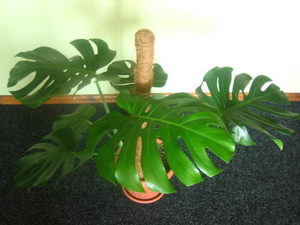 In nature, monstera loves shady, but sufficiently lit places. The scorching sun can burn its leaf plate, and too deep a shadow does not allow the flower to grow, even stopping its development completely. From this he will not die, he will lose his beauty and attractiveness. In low light foliage loses its decorative effect, acquiring a solid green color.
In nature, monstera loves shady, but sufficiently lit places. The scorching sun can burn its leaf plate, and too deep a shadow does not allow the flower to grow, even stopping its development completely. From this he will not die, he will lose his beauty and attractiveness. In low light foliage loses its decorative effect, acquiring a solid green color.
Monstera grows very quickly and grows strongly. It can reach a height of 5 meters, so it is necessary to find a room for it so that it is not cramped. The plant does not like when it is moved from place to place, it can even stop its growth.
Temperature regime
Caring for a flower involves adherence to the temperature regime, which should be within from +10 to +24 degrees... Monstera tolerates sudden temperature changes quite easily. High rates contribute to its intensive development, the main thing is that the air is sufficiently humidified.Too low air temperature leads to the fact that the monstera stops growing and will remain dormant until the degrees rise to a certain point.
Watering and feeding
Caring for a flower also involves watering and feeding it. The plant prefers humid tropical air. Since its leaves are capable of evaporating a lot of moisture, they need to be moistened regularly. To do this, wipe the leaf plates with a damp cloth, and to make their glossy surface shine, add a little milk to the water.
During the growth of the flower, it should be water hard enoughso that the earth does not dry out. At rest, this process should be minimized.
In order for the monstera to grow well at home and not lose its decorative effect, it should periodically be fed with fertilizers consisting of organic and mineral substances. In summer, feeding is carried out once a week, and in winter - once every 2 to 3 weeks.
Aerial Root Care
A feature of this plant is its aerial roots, which are necessary for its additional nutrition and hydration. Since they do not look very attractive, they are collected and tied to a trunk or wrapped in wet moss. When watering a flower, the roots should also be moistened. Thanks to this additional nutrition, the plant begins to grow well.
Transplant and rejuvenation
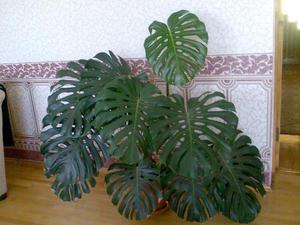 Up to 4 years of age, the monster is recommended to be transplanted every year, with an older flower, this process is carried out once every 2 - 3 yearsusing a larger pot each time. Its roots are quite powerful, requiring a lot of space, so the container should be wide and deep. The cramped space leads to his death.
Up to 4 years of age, the monster is recommended to be transplanted every year, with an older flower, this process is carried out once every 2 - 3 yearsusing a larger pot each time. Its roots are quite powerful, requiring a lot of space, so the container should be wide and deep. The cramped space leads to his death.
The 1/3 pot is covered with high-quality drainage, and for the soil use a mixture of the following components:
- turf;
- peat;
- humus;
- sand.
You can also use ready-made potting mix.
Since the monstera flower, the photo of which can be seen in this article, begins to lose its former attractiveness with age and sheds all the leaves from the lower part of the trunk, it is necessary to rejuvenate it. To do this, in the spring, a top about 30 cm long is cut off from the plant, which gives an impetus to the growth of lateral shoots. The top is lowered into the water so that it gives roots. As soon as the container is completely filled with them, it is transplanted into a pot, and in the future, care is carried out as for an ordinary flower.
Breeding monstera
Propagate this plant at home in three ways:
- Seeds. To do this, they are sown in the soil and left in a bright and warm room. In a month, they should already sprout. After 2 years, the flower has about 9 leaves.
- Cuttings. For this purpose, take stem or lateral processes, plant the cutting in a pot and cover with glass. It is recommended to water it twice a day. After the flower grows roots, it is transplanted into a larger container.
- Air layering. This breeding method is considered the simplest. For this, a layer with a leaf and an aerial root is taken, which is planted as an independent plant.
Diseases and pests
Most often this flower is at home the following pests are affected:
 Thrips. In this case, numerous light dots appear on the leaves above, and this pest can be found on the reverse side. They fight it by spraying the plant with an insecticide.
Thrips. In this case, numerous light dots appear on the leaves above, and this pest can be found on the reverse side. They fight it by spraying the plant with an insecticide.- Shield. Small brown plaques appear on the flower, the leaves begin to dry quickly and fall off. To destroy this pest, the stems and leaves are wiped with a soapy rag, after which they are sprayed with 0.15% actellic solution.
- Spider mite. This insect promotes the appearance of cobwebs, as a result of which the leaves become lethargic and lifeless. To cope with it, wiping the leaves with a soapy sponge and spraying with special solutions helps.
- Mealybug.In this case, young leaves and shoots begin to suffer - they bend, shrink, dry out and fall off. They fight this pest in the same way as with the scabbard.
The main diseases of monstera are associated with excessive moisture in the air and wrong temperature conditions... If the leaves begin to dry out, this indicates a lack of fertilizer or moisture. Highly moistened soil can ruin the roots of the plant, and the leaves begin to turn yellow. In insufficient light, leaf plates begin to develop poorly and become small.
Thus, we found out what the monstera is, the photo of which can be seen in the article. Propagating it at home is quite simple, just like caring for it. As a result of proper care, the flower becomes luxurious, delighting the owner with its gorgeous leaves.
